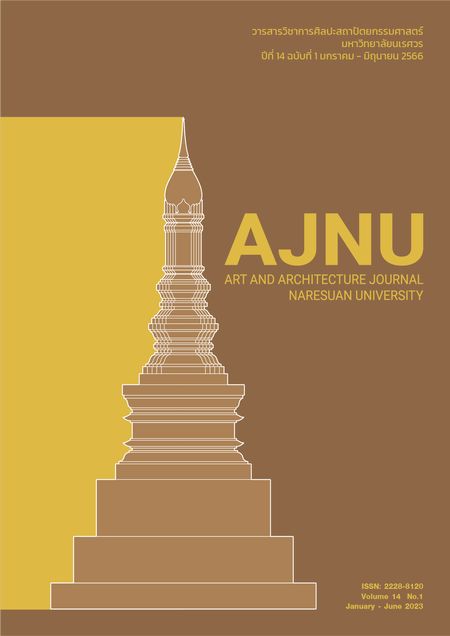Innovation banana and marine fish scales fiber for fabric uv protection UV protection weaving
Main Article Content
Abstract
Article Details

This work is licensed under a Creative Commons Attribution-NonCommercial-NoDerivatives 4.0 International License.
References
สาคร ชลสาคร. (2560). การปรับปรุงคุณภาพเส้นใยพืช (พิมพ์ครั้งที่ 1). กรุงเทพมหานคร: สถาบันพัฒนาอุตสาหกรรมสิ่งทอ
คณะกรรมการวัฒนธรรมแห่งชาติ, สำนักงาน. (2545). ผ้าไทยสายใยแห่งภูมิปัญญา สู่คุณค่าเศษฐกิจไทย. กรุงเทพมหานคร:
สำนักงานคณะกรรมการวัฒนธรรมแห่งชาติ.
วัฒนะ จูฑะวิภาต. (2555). ผ้าทอกับชีวิตคนไทย. คณะศิลปกรรมศาสตร์, มหาวิทยาลัยธุรกิจบัณฑิตย์. กรุงเทพมหานคร.
ศรัณย์ จันทร์แก้ว. (2562). การพัฒนาเส้นใยอ้อยเพื่องานออกแบบสิ่งทอ. (ปร.ด.). ชลบุรี: มหาวิทยาลัยบูรพา.
Wittawin.A. (2563). “การตลาดโลกสวย CMUU เผยเทรด์สินค้ารัก ธรรมชาติ ปี 2563 มีโอกาสขายได้ มากกว่า70%”.
สืบค้นเมื่อ 1 พฤศจิกายน 2564, จาก: https:// www.thumbsup.in.th/ cmmu-trend-green-consumer.
ปิยะพร คามภีรภาพพันธ์. (2557). การผลิตเส้นด้ายจากใยกัญชงด้วยระบบการผลิตเส้นด้ายแบบวงแหวน, มหาวิทยาลัยเทคโนโลยี
ราชมงคลกรุงเทพ. กรุงเทพมหานคร.
ผู้จัดการออนไลน์. (2563). “กลยุทธ์ปลูกกล้วยให้ได้ประโยชน์ กินก็ดี ขาย – ส่งออกก็ได้กำไร”. สืบค้นเมื่อ 1 พฤศจิกายน 2564, จาก: https://mgronline.com/smes/detail/9630000126929
Textilelifoofcolorchem. (25 มีนาคม 2018). ค่า Ultraviolet Protection Factor ของสิ่งทอ. สืบค้นเมื่อ 2 กุมภาพันธ์ 2565, จาก : https://textilefoodcolorchem.wordpress.com/2018/03/25/ค่า-ultraviolet-protection-factor-ของสิ่งทอ/


